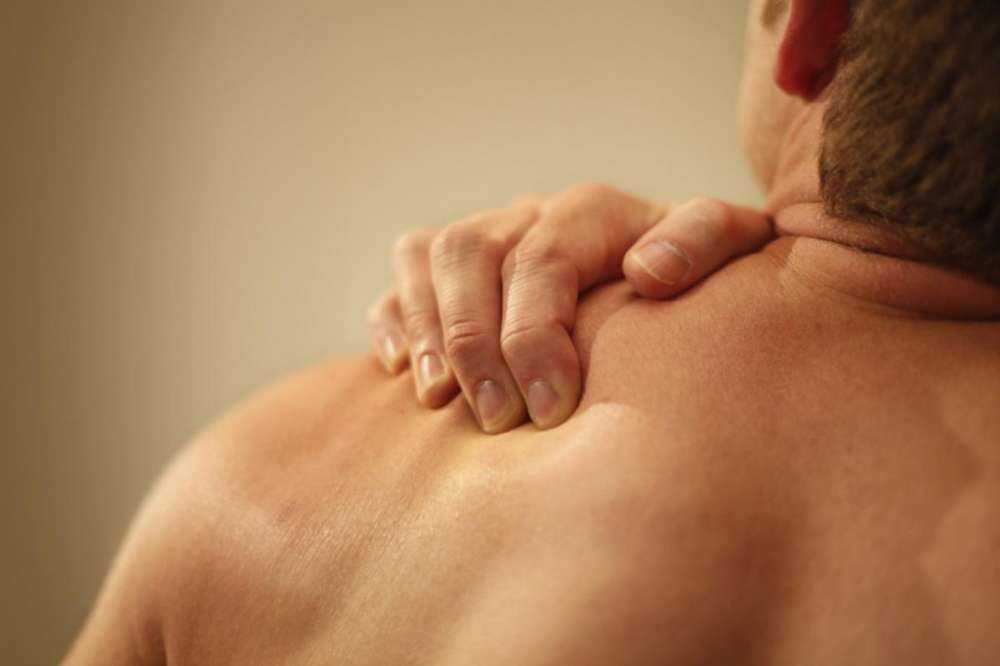By Geeta Maraj
December 18th, 2013 Edition
It can be difficult to cope with movement of the arms during periods of aching shoulders. However, mobility and exercise are the only way of actually ensuring that shoulder pain becomes lessened over time. Yoga has many exercises designed to help build muscle strength, thereby, reducing aches and pains of the joints. Many of these exercises similarly help with arthritic discomfort of the shoulders.
While we may assume that when it hurts, it is better to keep that body part still; this is not the case for arthritis of the joints. In fact, without constantly exercising the muscles, the joints cannot become stronger. Research shows that through strengthening of muscles of the body, synovial fluid is triggered to begin flowing again and helps to lubricate the joints once more.
Here are a few yoga exercises for the shoulders:
Exercise number one:
Stand against a wall, and keep your arms outstretched along the side of your body. Then place your palms facing the wall and push against the wall with as much force as you can tolerate. Pretend that you are trying to push your body away from the wall through the strength of your palms. Keep your arms extended downwards as you push against the wall. Remember to breathe in as you begin the exercise, hold your breath as you push against the wall and exhale as you release your hands from the wall. Repeat up to three times as a beginner and increase the repetitions as your arms become stronger.
Exercise number two:
Face the wall and bring your hands on the wall at shoulder level. Step back about a foot away from the wall, ensuring that your elbows are bent and are kept close to your body. Push against the wall as if you are trying to push the wall down. Breathe in as you are about to begin the push, hold your breath as you are pushing against the wall, and exhale as you release your push from the wall. Repeat up to three times and increase the repetitions as you become stronger.
Exercise number three:
This series are basically the same stretches as exercise one and two, except you are working a single arm at a time, thereby, changing the angle of the weight bearing stretch. Turn to the right side and keep your body as close to the wall as possible. Keep your arm extended along the side of your body. Turn your palm to face the wall and pretend you are trying to push the wall away. Breathe in as you are about to being the push, hold your breath as you are pushing against the wall, and breathe out as you come out of the position. Then turn to the left side and repeat the same stretch for the left arm. Repeat up to three times for beginners.
Then turn facing the wall, step back a foot away, and place your right hand on the wall at shoulder level. Keep your elbow close to your body and push against the wall using your right arm only. This posture resembles doing a one arm push up from a standing position against the wall. Repeat the same exercise with the left arm. Begin with a single push up and increase to the number of repetitions you are able to tolerate without much discomfort.
Exercise number four:
Turn to the right side, and step away from the wall about 3 feet. Extend the right arm toward the wall, keeping the arm at shoulder level. Try to step far enough away from the wall so that you can barely touch the wall. Keep reaching without arching your body toward the wall and pretend like you really want to reach the wall but cannot move your body. This helps to extend your arm to its full capacity. Then slowly keep stepping into the wall, and place your palm onto the wall. As you move closer to the wall, extend your arm upward as if you are trying to reach toward the top of the wall. To come out of this position, begin stepping away from the wall again, till you are 3 feet away and your arm is extended outward trying to reach the wall. At the beginning this might be very difficult to achieve, especially if you have been suffering from sore shoulders for quite some time. Reach toward the ceiling where it is tolerable for you and with time your reach toward the ceiling will improve.
Repeat the same stretch on the left side. It is important that you breathe throughout this stretch and try not to hold your breath at any time during this exercise. Should you forget to breathe, this can cause you to experience cramping of the arm.
To relax your arm after any of these stretches, simple shake your entire arm as if you are shaking water off your entire arm by giggling it back and forth. This helps to loosen the muscles and increase blood flow to the arm.

